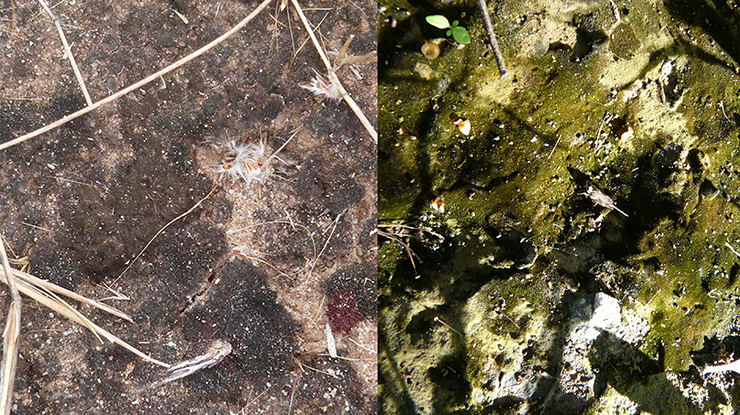
Producers will have new information on how fire and grazing can be managed to optimise nitrogen inputs by biocrusts to improve the productivity of grazing lands, through an MLA project underway in the NT and Queensland.
Researchers at the University of Queensland are putting biocrusts – the living skin on the surface of the soil – through their paces at the Kidman Springs fire experiment 400km south of Darwin and the Wambiana grazing trial in north Queensland. (These sites are run by the Northern Territory Department of Industry, Tourism and Trade and the Queensland Department of Agriculture and Fisheries, respectively.)
Here's why biocrusts are so important
What are biocrusts?
Biocrusts – which appear all over the world – are found in the top 1–2cm of soil. They are composed of lots of tiny organisms including cyanobacteria, fungi, green algae, bacteria, lichens, liverworts and mosses. In tropical savannas, biocrusts are dominated by cyanobacteria and liverworts. They grow when it's wet or dewy and become inactive when it's dry, just like plants.
But wait, aren't soil crusts a bad thing?
There are two types of soil crusts. Living biocrusts are distinct from dead physical crusts that form on degraded soils. Physical soil crusts can inhibit water infiltration and plant growth. Living biocrusts enhance soil moisture, soil fertility and plant growth.
What do biocrusts do?
They stabilise the soil surface by binding soil particles together, preventing erosion from wind and water. They photosynthesise and fix carbon by pulling it out of the air and incorporating it into the soil to enhance soil carbon. They fix nitrogen. Most cyanobacteria fix nitrogen (N) out of the air just like legumes do. They use the N to grow and store any excess N they fix in a slimy layer around their cells.
When it rains, much of this plant‑available N enters the surrounding soil and is available for pastures. In the dry season the biocrusts dry out and partly disintegrate. This nutrient‑rich biocrust is incorporated into the soil as organic matter with early wet season rains. The amount of nitrogen that biocrusts fix every year is similar to the amount of nitrogen fixed by native legumes in grassy tropical savannas.
What are the researchers looking at?
Soil fertility is a major limitation to pasture growth in tropical savannas, but it doesn't pay to add fertilisers at these extensive scales. Researchers are testing if grazing and fire can be managed to maximise the natural carbon and nitrogen inputs by biocrusts into soils and enhance soil fertility and productivity in tropical savannas.
What effect do fire and grazing have on biocrusts?
The right amount of fire can enhance biocrusts by removing litter, trees and shrubs that would otherwise compete as ground cover. Biocrusts in Australia's tropical savannas, like the native vegetation, have evolved with fire and are well‑adapted to it. Biocrusts from Kidman Springs grew just as well and had similar carbon and nitrogen levels after fire as unburnt sites. Grazing can also potentially open up spaces for biocrusts by reducing plant cover, but biocrusts are susceptible to heavy trampling. At the Wambiana grazing trial near Charters Towers, biocrust cover was higher and healthier with moderate grazing than with heavy grazing. Future work will examine what this means for nitrogen inputs.






